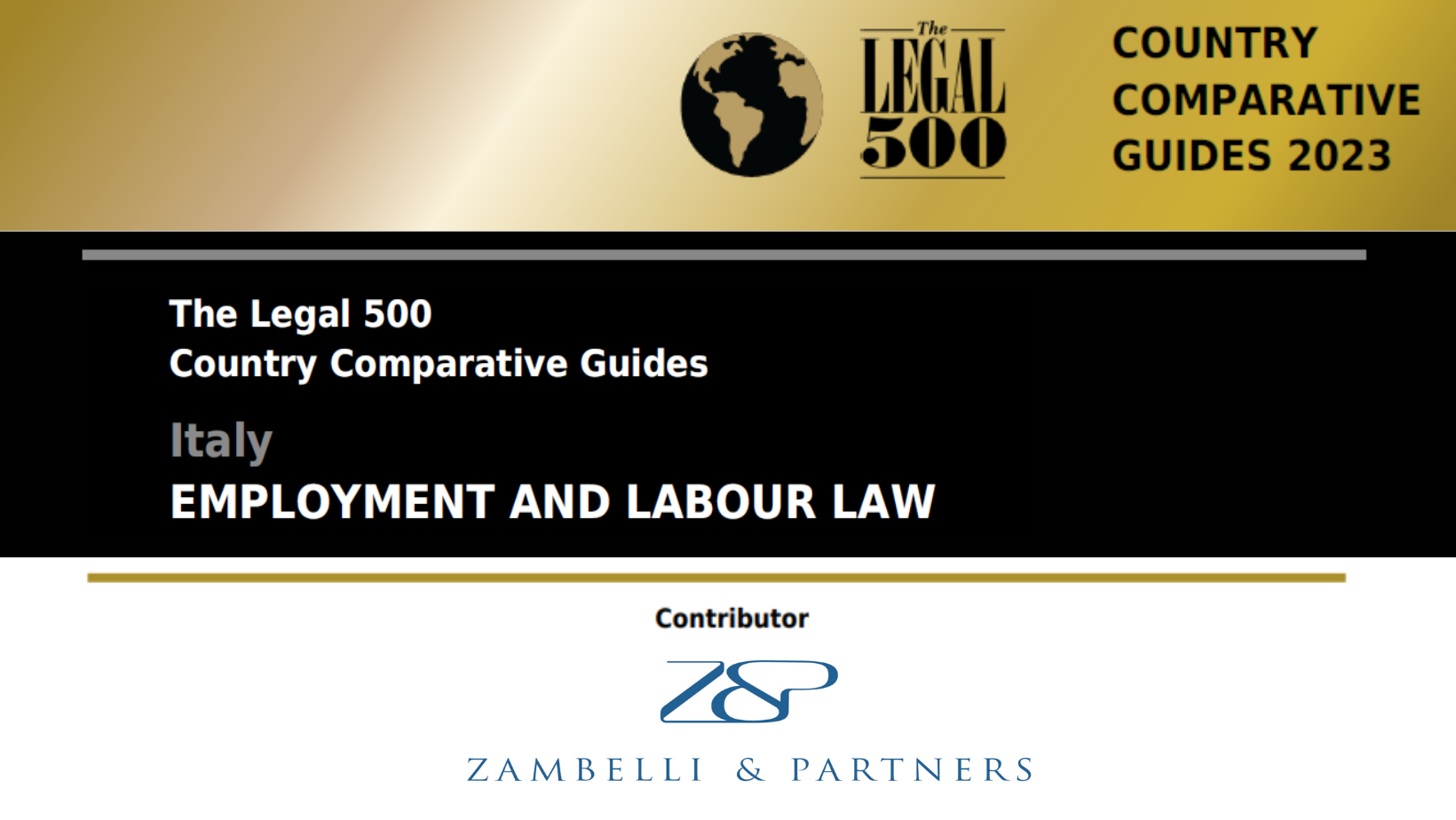The Legal 500 Employment & Labour Law Country Comparative Guide 2023 in now online. The Italian Chapter was edited by Zambelli & Partners
The country-specific Q&A, drafted by partners of Zambelli & Partners, is now available on legal500.com and provides an overview of Employment and Labour laws and regulations applicable in Italy.
Below is an extract, click here to read the Q&A on legal500.com.
1. Does an employer need a reason to lawfully terminate an employment relationship? If so, state what reasons are lawful in your jurisdiction?
Over the trial period, any employment relationships may be legitimately terminated by the employer even if neither a “cause” for termination nor other specific reasons allowing employees’ dismissal occur.
Once the trial period ends, employment contracts executed with employees holding the qualification of middle-manager (“quadro”), white-collar or blue-collar may be lawfully terminated by the employer only where any out of the reasons detailed below occurs:
- a cause for termination (“giusta causa”), this being a breach by the employee whose seriousness prevents the continuation, even on a temporary basis, of the employment relationship (for example, the theft of the employer’s goods);
- subjective justified grounds (“giustificato motivo soggettivo”), these being a less serious breach by the employee (for example, unjustified absences from work);
- objective justified grounds (“giustificato motivo oggettivo”), which qualify as those reasons relating to the production, the work organization or its regular operation (namely, individual redundancies).
Employment contracts executed with executive status employees (“dirigenti”) are governed by specific rules set forth by the national collective bargaining agreements applicable to such category of employees, which generally provide for that their dismissal must be “justified” (according to case-law precedents hereof, the dismissal of an executive is “justified” whenever it relies on reasons other than false, arbitrary, discriminatory or unfounded grounds).
2. What, if any, additional considerations apply if large numbers of dismissals (redundancies) are planned? How many employees need to be affected for the additional considerations to apply?
A specific procedure (the “collective dismissal procedure”) within which the employer is charged with information and consultation obligations towards the external trade unions/internal works councils has to be triggered in advance whenever an employer staffed with more than 15 employees – due to reduction, transformation or shutdown of activities – intends to dismiss, within a 120-day term, at least 5 employees employed at the same production unit or at different production units within the same province.
For details about such procedure, please refer to question no. 7 below.



